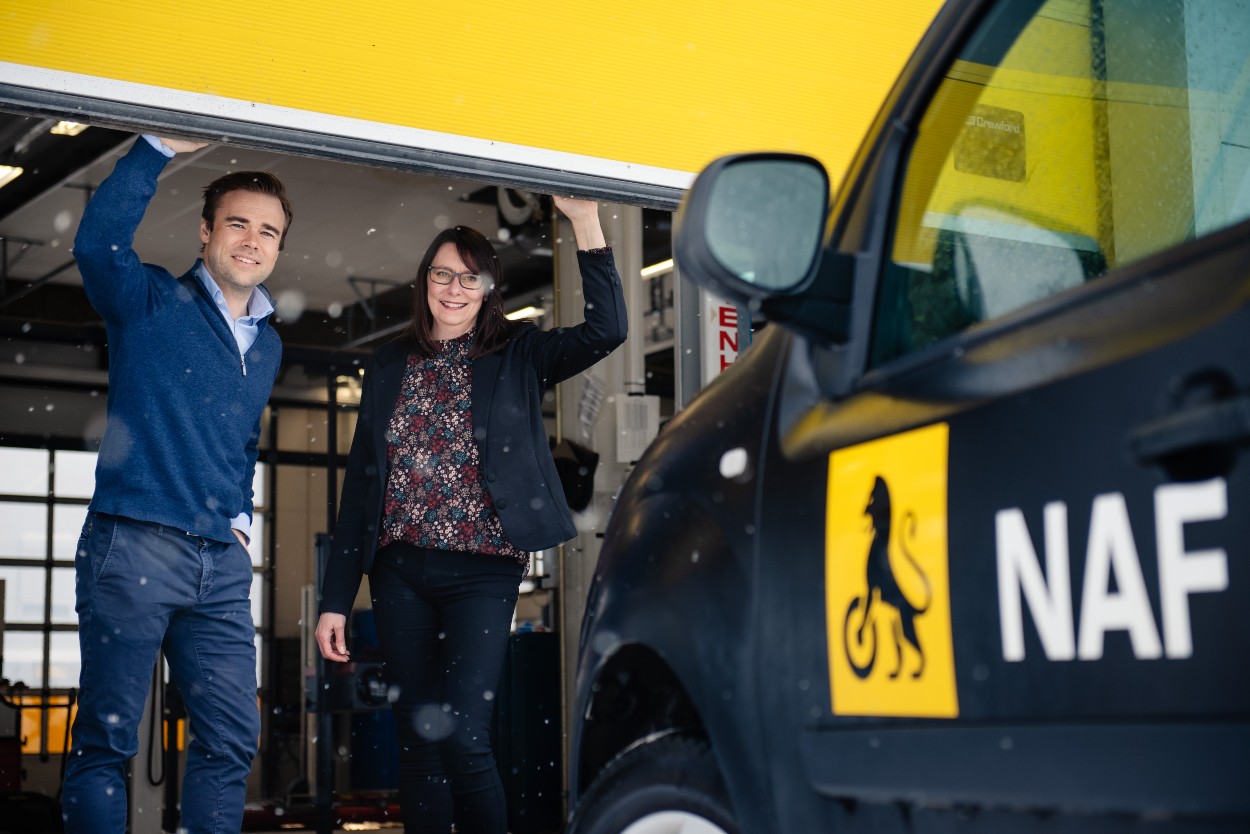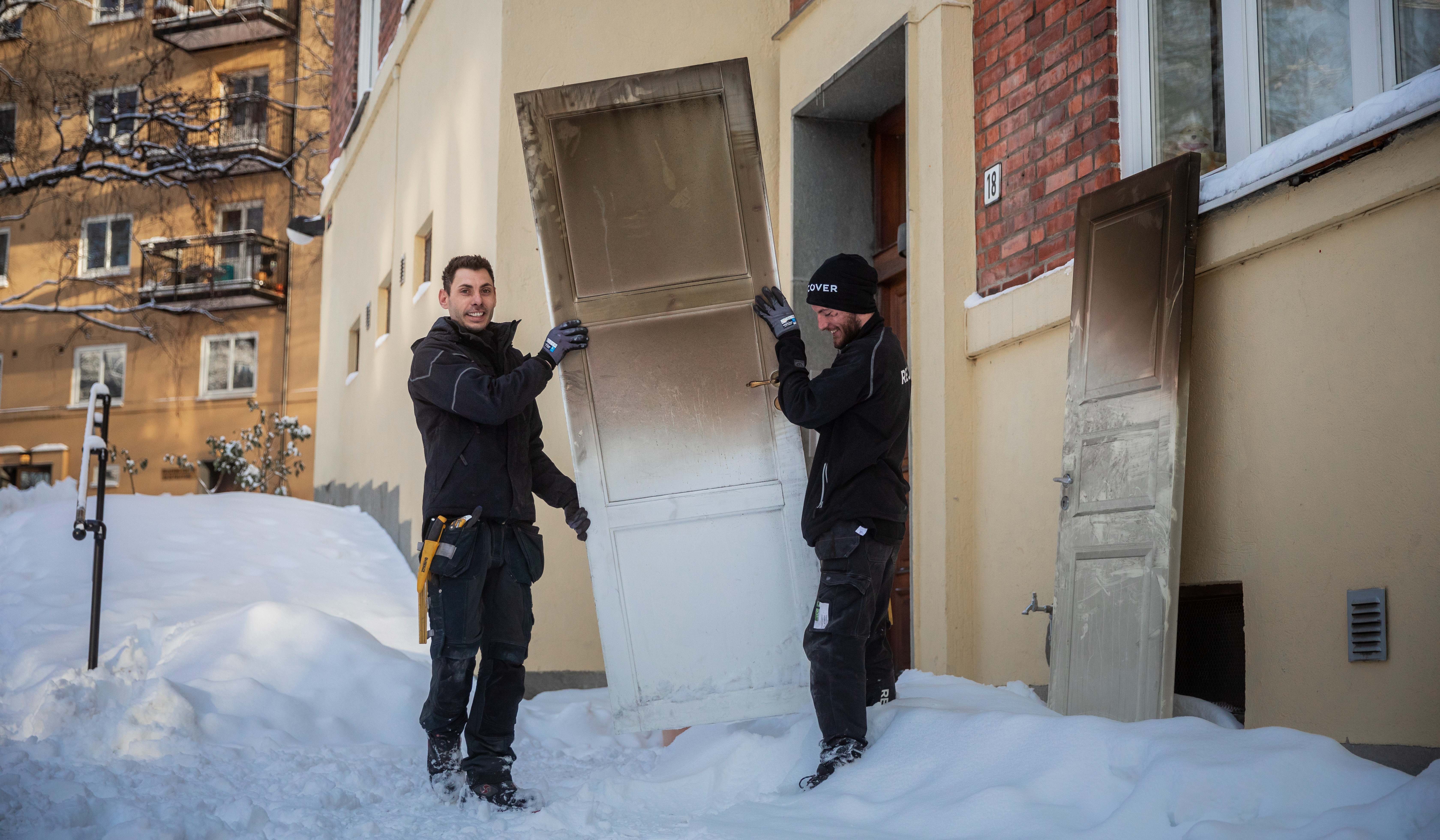
Recover: 160,000 invoices annually - how they got rid of their backlog
Recover specialises in cleaning up after fire, water and environmental damage. Now they have also tidied up their finance department. With SEMINE 93 % of all incoming invoices are posted automatically – and correctly – in the accounts, while four employees have been freed up to perform other tasks.

It can be highly demanding to manage project organisations effectively. Recover AS knows that very well. The company specialises in clean-up and reconstruction after fire, water and environmental damage, and since it's inception in 1975, it has grown into the Nordic region’s leading player in damage limitation. In a normal year, they handle 35–40,000 assignments and have a turnover of over NOK 1.5 billion.
– We typically work with residential buildings, flats or other buildings that have been damaged by floods, fires etc., and our task is then to help both residents and others who have been affected to return to a normal life as quickly as possible. For this we have 1,200 carpenters, painters, plumbers, electricians and other craftspeople working for us all over Norway, says Fredrik Minsås, Finance Manager at Recover AS.
The problem with manual processes
– We used to do everything manually. We entered the accounting information and project number by hand, and manually sent out invoices for approval. It was very time consuming and highly prone to errors.
An additional challenge is that the invoices we receive are not evenly distributed throughout the month. Many of them often arrive late in the month. Say we receive 15,000 invoices a month, we often receive 10,000 of them in the last week alone, says Minsås.
Previously, Recover, which handles around 160,000 incoming invoices each year, had to have six people working almost exclusively with receiving, posting and sending invoices out for approval to the right place and the right person. Even so, the finance department was constantly left with a huge backlog of invoices that hadn’t made it through the system. That created a whole host of challenges.
– Everything we buy from our 4–5,000 active subcontractors goes into projects that we then invoice out again. And we can’t send out an invoice until we have a full overview of all the costs in a project. This led to delays in the settlement of payments to our suppliers, and we often received interest invoices and payment reminders, which created even more work, he says.
Artificial intelligence was the solution
Minsås and the finance department responded to this challenge by implementing SEMINE – and they quickly saw results.
– We freed up a good deal of time, and decided to use some of that time to address two issues that would make it easier for SEMINE to save us even more time: One was to get our subcontractors to send invoices in PEPPOL format, and the other was to have them include the project number on every single invoice. Naturally, this required all our suppliers to know what the project number was, so we also had some work to do with our own people, says Minsås.
Getting suppliers to include project numbers on their invoices requires training the employees who order goods and services, as well as the suppliers. This is a continuous process. Another step was to get employees to use the company’s existing suppliers. Minsås says that Recover generally uses around 1,500 new suppliers a year, although he would prefer that number to be lower:
– Bringing on a new supplier often requires the system to acquire new learning. You may be buying the same item and SEMINE can recognise that by itself, but onboarding new suppliers is always a bit time consuming, he says.
Significantly better processes
All this has really helped get things done. Now, nearly all invoices contain the project number, and 90–93 % of them arrive in PEPPOL format. SEMINE handles most of them automatically and sends them straight to the workflow and on to the right approver, which significantly improves the entire process:
– Now, the people responsible for approving invoices don’t have to spend time figuring out what VAT code, project number or account to use. They should never need to think about it as it’s automatically entered by the system.
They just need to say yes or no, says Minsås, who also praises SEMINE’s mobile app for making the job easier.
– At least for us, with people working at external locations who are rarely in the office, it’s brilliant! If you want to approve an invoice, you just open the app and tap ‘OK’ – right from your mobile. Of course, you can also dive deeper into an invoice in the app and look at both posting information and VAT, but most people don’t need to do that, he says.
– Now, the people responsible for approving invoices don’t have to spend time figuring out what VAT code, project number or account to use. They should never need to think about it as it’s automatically entered by the system
Company-wide benefits
Switching to SEMINE has not only made life easier and less frustrating for the employees, it has also brought great benefits to both the finance department and the company as a whole:
– With a better overview of invoices, the company has better control of liquidity. Plus, we now rarely receive payment reminders or debt collection claims. We’re down to just two people who are more or less dedicated to invoice management, yet we never have backlogs anymore.
– Much of this is attributable to SEMINE’s use of artificial intelligence. After they had time to train themselves, the finance department left it to SEMINE to automatically suggest the posting for the invoices sent out for approval.
– As a result, 93 % of invoices never go back to the accounting department, but straight into the accounts for payment.
– We eventually realised that we had to be brave enough to use the technology – just let the system work, adding accounts, projects, departments and whatever was needed. And when two of our invoice approvers have said ‘OK’ to the invoice, we incorporate it into the accounts. That was our main concern: Should we enable this functionality? We said: ‘Let’s give it a shot!’ And it’s been brilliant, says Minsås.
– We’re down to just two people who are more or less dedicated to invoice management, yet we never have backlogs anymore.
He adds that they have added a number of “stops” to the system for certain things that they know can be wrong, as well as rules that can override them. This means, for example, that if an invoice is missing a project number, it should actually be stopped, but if it is a recurring cost for the head office, it can be let through anyway. In any case, there are now many invoices that the accounting department never sees. However, Minsås is crystal clear on one thing:
– The finance department must own the entire posting process, right from the moment the invoice arrives. We trust the technology, but we perform regular quality controls and check certain things more frequently, such as VAT. Now we can dedicate our time to many other things, he closes off with.
